The Royal Family Exiled During the Interregnum Period of English History Was the
Killing of a 'treasonous' King
Killing of a 'treasonous' Male monarch
Banqueting House will remain closed until farther observe only is open for individual events and weddings. We apologise for whatever disappointment this may cause.
Equally a Male monarch, Charles I was disastrous; as a homo, he faced his death with courage and dignity. His trial and execution were the starting time of their kind.
Charles I only became heir when his brother Henry died in 1612. Charles had many admirable personal qualities, merely he was painfully shy and insecure. He also lacked the charisma and vision essential for leadership. His stubborn refusal to compromise over power-sharing finally ignited civil war.
Seven years of fighting between Charles' supporters and Oliver Cromwell's Parliamentarians claimed the lives of thousands, and ultimately, of the Male monarch himself. Charles was convicted of treason and executed on 30 January 1649 outside the Banqueting House in Whitehall.
Did you know?
Charles was non born to be male monarch. He was the youngest kid of James I, known equally 'Baby Charles'.
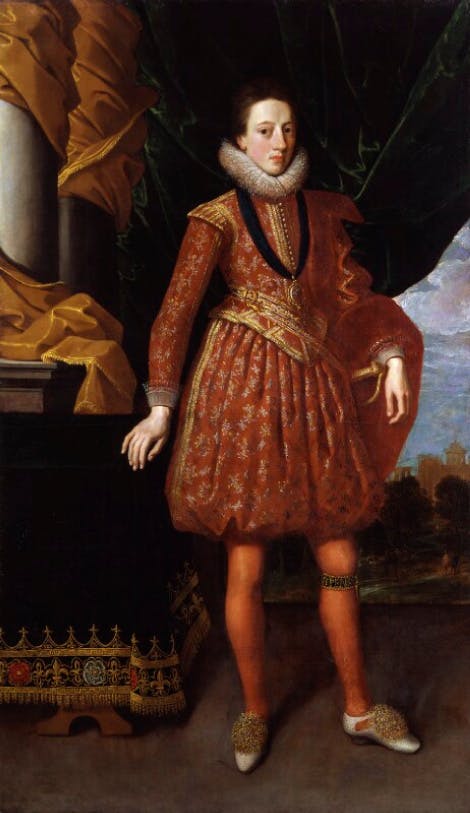
Birth of Charles I
Charles was built-in on nineteen Nov 1600 at Dunfermline Castle in Fife, Scotland. He was the second son of James VI of Scotland/James I of England and the youngest of the royal family.
If Charles' popular and likeable elder brother Henry had not died young of typhoid it is unlikely that England would have been riven past the bloodiest ceremonious war e'er known.
Charles was a sickly child, very small (his adult top was only 1.5m) and still could not walk or talk aged two.
He inherited his father'southward lack of confidence and a slight speech impediment, which he worked hard to conquer.
When his father succeeded to the English language throne in 1603 the family moved to London. 2-year-old Charles spent his first English language Christmas at Hampton Court Palace.
Image: Charles I circa 1616, © National Portrait Gallery, London
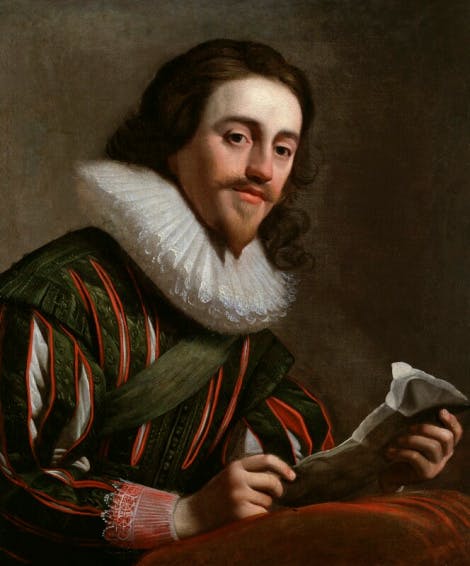
A controversial King
In individual, Charles was gentle and polite, by all accounts a loving father. However, in public the King's astute shyness made him appear haughty and big-headed.
Charles also did non permit anyone except his wife to sit down in his presence. This infuriated his enemies, peculiarly Parliamentarians.
His lack of empathy and refusal to consider opposing views led to his increasing unpopularity. Determined to maintain absolute ability, Charles was out of step with the changing times.
Image: King Charles I by Gerrit van Honthorst, 1628, © National Portrait Gallery, London
A king defeated
The Royalists made a strong start, and their cavalry remained undefeated until 1644. Gradually the Parliamentarians under military genius Oliver Cromwell began to gain the upper hand in what become the bloodiest war ever fought on English soil.
The Battle of Naseby in June 1645 and the defeat of the Royalist army probably marked the turning betoken in the war, although fighting dragged on until 1649.
Did you know?
Some families had bitterly divided loyalties, brother fighting blood brother, simply religion cut deeper, with Catholics disposed to support the King.
Distressing farewells
Charles I was given just three days to put his affairs in order and say cheerio to his family unit. After the trial he was taken by sedan chair a short distance to his old room at Whitehall Palace. Charles refused to come across anyone only his children and his chaplain, Bishop Juxon. The next mean solar day the Rex was moved to St James's Palace.
Charles spent the twenty-four hours burning papers, praying and saying deplorable farewells to his two youngest children, Henry Duke of Gloucester, aged 9 and Princess Elizabeth, who was 11.
Did you know?
His wife, Henrietta Maria had fled abroad earlier in the war, and his other children were also in exile.

'Sweetheart, you lot will forget this.'
A bitter day
A huge crowd had gathered in the bitter weather. But they were held then far away that the King'south terminal brusk spoken language was lost in the freezing air. Erected against the Banqueting Business firm in Whitehall, the scaffold was hung round with black cloth.
In the center of the blackened and sanded floor stood the axe and a lower quartering block of a kind used to amputate traitors. Two men, heavily disguised with masks, stood ready to perform the act.
Did you know?
It is said that Brandon, the official executioner could non be found.

I go from a corruptible to an incorruptible crown; where no disturbance can exist, no disturbance in the world.
The restoration of the monarchy
When Charles II returned from exile in 1661 public stance had swung right back backside the monarchy. Many people were heartily sick of the sober restraints of Puritanism.
Oliver Cromwell, who died a disillusioned man in 1658, had failed to create a working Parliament and his incompetent son and heir, Richard, was forced to resign. Rather than endure another Civil War, Parliament invited the belatedly King's son to render to rule.
Did you know?
Oliver Cromwell'southward son was known as 'Tumbledown Dick'.

A beautiful legacy
Charles I remains the only English monarch to accept been tried and executed for treason.
In the years after his death, the muddle of Parliament, sober life under the Puritans and ultimately failure to plant a functioning government meant people started viewing Charles I differently.
Possibly Charles I'due south most important legacy is his fabulous art collection, which at present forms the Regal Collection.
The execution of Charles I is remembered every yr on xxx January with a service in the Banqueting House.
Image: Bust of King Charles I outside Banqueting Business firm. The inscription reads: 'His majesty King Charles I passed through this hall and out of a window most over this tablet to the scaffold in Whitehall where he was beheaded on 30th Jan 1649'.
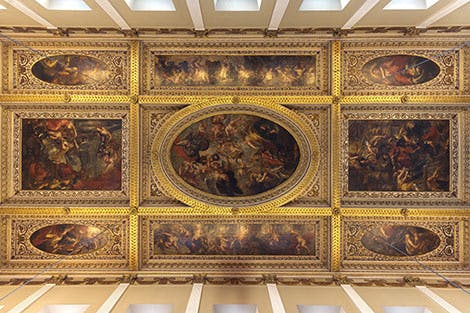
Rubens' ceiling
Marvel at Sir Peter Paul Rubens' ceiling in its original setting of Inigo Jones' spectacular Banqueting House.
Closed
Banqueting House
Included in palace admission (members go gratis)
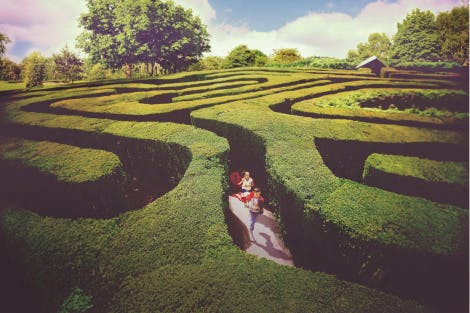
The Maze
Lose yourself in the well-nigh famous maze in the earth. The Hampton Court Maze is withal baffling visitors subsequently 300 years.
Open up
Hampton Court Palace
Included in palace admission (members go free)

Hampton Court Gardens
Take fourth dimension to explore and relax in these world-renowned gardens without the usual crowds.
Open
Hampton Court Palace
Included in all admission tickets (members go free)

Store homewares
In our home section you volition find stylish lifestyle domicile accessories and furnishings, including cushions, tapestries, ornaments and much more which will add those finishing touches to make your room consummate.
From £9.99
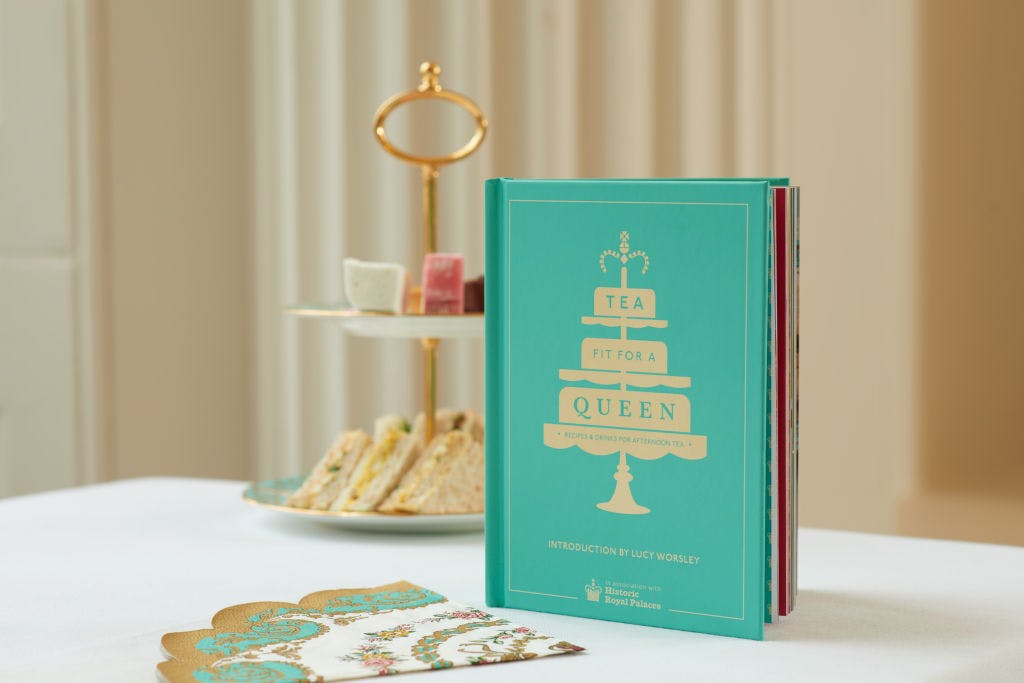
Store HRP Books & Publications
Find books inspired by the palaces in our care, learn about fascinating periods of British history, including our official palace guide books, children's books and more.
From £10.99

From £five.99
Source: https://www.hrp.org.uk/banqueting-house/history-and-stories/the-execution-of-charles-i/
0 Response to "The Royal Family Exiled During the Interregnum Period of English History Was the"
Postar um comentário